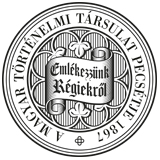Századok – 2015
2015 / 3. szám - TANULMÁNYOK - Soós László: Tisza István kormányalakítása és parlamenti küzdelmeinek első időszaka (1903. november 3. - 1904. április 19.)
TISZA ISTVÁN ... PARLAMENTI KÜZDELMEINEK ELSŐ IDŐSZAKA.623 Függetlenségi Pártkörben összegyűltek emlékeztettek arra, hogy korábban Széli Kálmán miniszterelnök és most Tisza István is ígéretet tett Thaly Kálmánnak arra, hogy Rákóczi hamvainak hazahozatalát elősegítik. Az uralkodó ezzel a kezdeményezésével a parlamenti béke megteremtésében fontos szerepet játszó Thaly Kálmánt és Tisza Istvánt egyaránt jutalmazta.165 A királyi kézirat nyomán keletkezett kedvező politikai hangulatot — a kirobbant vasutas sztrájk miatt — a kabinet végül is nem tudta a maga javára fordítani. Az 1904. év második felében a miniszterelnöknek a házszabály módosítás érdekében tett parlamenti intézkedéseit nem csak az ellenzék, hanem a Szabadelvű Párt tagjainak jelentős része is elutasította, és a politikai válság feloldása érdekében meghirdetett országgyűlési választásokon a kormánypárt veresége Tisza István első kormányának bukásához vezetett.166 THE FORMATION OF THE GOVERNMENT OF ISTVÁN TISZA AND THE FIRST PERIOD OF ITS PARLIAMENTARY STRUGGLES (3 November 1903 - 19 April 1904) by László Soós (Summary) In 1903 the parliamentary opposition made its voting of the laws regarding the military conditional upon the consent by the ruler to the use of Hungarian as the language of command. Francis Joseph refused to accept the Hungarian petitions with reference to his prerogative rights in the field of military matters, and, consequently, the opposition set about an obstruction that paralysed the parliament’s working. In order to put an end to the political crisis, the Liberal Party adopted at its session on 28 September 1903 a decision on the elaboration of a military program which would be acceptable to both the ruler and the members of the governing party, and thus serve as a basis for effective negotiations with the opposition. On 3 November 1903 count István Tisza could form his government on the basis of the militaiy program which had been agreed upon after long negotiations between the so-called committee of the nine and the ruler. But the program of the new administration was rejected by the opposition, and the House of Representatives was once again paralysed by continued obstruction. Thus, on 26 November 1903, the governing party suggested to hold parallel, afternoon sessions to get round the obstruction. In response, Ferenc Kossuth, head of the Party of Independence, made an agreement with the prime minister on 5 December 1903, offering to suspend obstruction in return for the withdrawal of the proposal on parallel sessions. As the agreement was rejected by some of the representatives, on 5 March 1904 István Tisze submitted to parliament a proposal for the temporary modification of the standing order whereby to suppress obstruction. Despite the united resistance of the opposition parties, the proposal of the prime 165 OL Thaly Kálmán iratai P1747-6. tétel-7962. Tisza István meghívója Thaly Kálmán részére az 1904. jún. 22-én, a miniszterelnöki palotában tartandó megbeszélésre. Tárgy: II. Rákóczy Ferenc hamvainak hazaszállítása. 1904. jún. 18. A Törökországból hazatérő Thallóczy Lajost a miniszterelnök 1904. nov. 9-én fogadta. Erre a megbeszélésre Thaly Kálmán is hivatalos volt. Továbbá: Uo. 6. tétel-7966. Tisza István levele Thaly Kálmán részére. 1904. nov. 9. A II. Rákóczi Ferenc és bujdosó társainak hamvainak felkutatásához és hazaszállításához szükséges költségfedezetrőlelőirányzat nélküli kiadásként- a kormány az 1905. febr. 28-án tartott minisztertanácson hozott határozatot OL K27 Minisztertanácsi jegyzőkönyvek, 1905. febr. 28. 54./4. Ld. még: Dokumentumok II. Rákóczi Ferenc és társai újratemetéséhez (1873-1906) Szerkesztette: Halász Hajnal, Katona Csaba, Ólmosi Zoltán. Budapest, 2004 166 A fenti tanulmány részlet a készülő: Tisza-kormány minisztertanácsi jegyzőkönyvei c. forráskiadvány bevezetőjéből.
